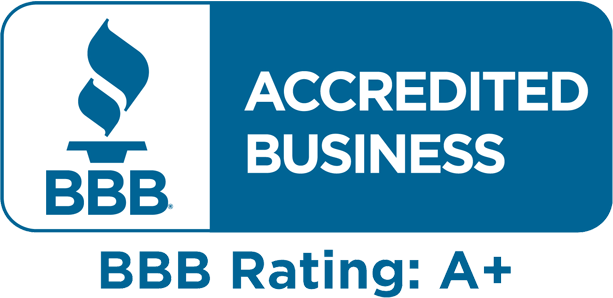What Are Additional Living Expenses for Home Insurance Claims?
Most home insurance policies include coverage for additional living expenses, or ALE.
Additional living expenses include hotel accommodations, food, and other things you need to buy because of a covered event – like a house fire that made your house unlivable.

Understanding additional living expenses can add thousands of dollars to your claim. This is money you are rightfully owed.
Today, we’re explaining everything you need to know about additional living expenses and how they work for home insurance claims.
How Additional Living Expense Coverage Works
When you buy home insurance, you’re buying protection against unexpected events.
If your home is destroyed in a house fire, for example, your insurer covers the cost of repairing or replacing your home.
Your insurer also covers certain unexpected costs related to the incident – like additional costs you must pay to live safely after a fire. These are additional living expenses, and they include things like car rental costs, hotels, meals out, and more. This is an additional coverage above and beyond your policy limits for the dwelling coverage. If you don’t see Additional Living Expense coverage on your Declarations Page, you need to contact your agent and add this to your policy.
Once this coverage is added to your policy, Insurers don’t expect you to live on the street after a house fire; instead, they expect you to find suitable accommodations for yourself and your family, buy clothing and food, purchase storage space for possessions, and pay for any other additional living expenses you would not normally have incurred.
If you have been forced out of your home due to a covered incident (like a house fire or flood), then make sure to keep all receipts. Your insurer is required, per the terms of your insurance contract, to cover certain additional living expenses. That could mean thousands of extra dollars on your final claim.
What Are Considered Additional Living Expenses?
According to United Policyholders, all of the following items are examples of what could be considered additional living expenses:
- Rent for temporary housing, including the cost of a short-term rental property, hotel accommodations, or other living situations.
- Mileage to and from the temporary accommodations to your place of employment, adult and children’s activities (like schools, ports, clubs, or lessons), or your house of worship.
- Mileage to and from the temporary accommodations to all locations linked to the rebuild of your property, including furniture stores, hardware stores, and appliance shops, among others.
- Meals eaten when living away from your property, including food costs above what you would normally pay.
- The cost of setting up new services at your temporary accommodations (like a new internet plan or new utilities).
- The cost of laundry and certain other tasks you are normally able to perform at home.
- Moving costs incurred when moving from the temporary accommodation back to the original property (say, your rebuilt or repaired home).
- Additional fuel costs incurred as a result of the loss.
- The cost of a rental car and other types of transportation.
- The cost of storing certain items after a loss, including new and old furniture and certain other items.
- The cost of moving furniture and other items into your home after a loss.
- The cost of cleaning your temporary accommodation after you leave.
- The cost of pet boarding.
- Many other additional costs you incurred as a result of a covered loss, up to the point where you can safely move back into your home or reach your policy limit (whatever comes first).
Your insurer is required to cover all of these things as additional living expenses if this coverage is added to your policy. Keep your receipts and track your spending after a loss to ensure you’re receiving appropriate compensation.
What Is Not Covered by Additional Living Expenses?
Additional living expenses are just that: additional living expenses. They’re costs you are forced to pay in addition to your ordinary living expenses.
You don’t normally need to spend a week in a hotel and eat out for three meals a day, for example. However, if your home was destroyed by a tornado, then these are additional living expenses you need to pay.
For that same reason, insurance will not cover ordinary living expenses. Items not typically covered under additional living expense coverage include costs you are already responsible for paying, including:
- Childcare
- Insurance
- Mortgage
- Food
- Utilities
- Other ordinary expenses you normally pay
Your insurer will not usually cover the cost of fuel for your vehicle. However, if you are forced to stay in a neighboring city after a loss and add an extra 50 miles to your commute, then your insurer could cover the additional cost of fuel as part of your additional living expenses.
How to Claim Additional Living Expenses
Insurers ask for proof of additional living expenses you incurred as a result of a covered loss.
Typically, you submit any required receipts or invoices to your insurer to receive compensation. Your insurer checks the receipts, verifies they’re additional living expenses under the terms of your insurance policy, then reimburses you for the costs. For meals at restaurants, you must keep the itemized receipt for them to consider it and pay for it.
Contact your insurance company’s adjuster or submit receipts to your insurer to receive compensation for additional living expense coverage.
How to Adjust Additional Living Expense Coverage
Many homeowners are surprised to discover they can adjust additional living expense coverage.
Most homeowners insurance policies have a default percentage of additional living expense coverage – say, around 25% of your insurance policy’s dwelling coverage. Most homeowners never change this percentage, and it’s sufficient for most homeowners.
However, some homeowners choose to upgrade their additional living expense coverage to something called “actual loss sustained” coverage. Under actual loss sustained coverage, your insurer covers all additional living expenses with no limit. Whether you need to spend a week or a year in a hotel, your insurer covers your costs without a limit.
Check your “loss of use” or “additional living expense” portion of your home insurance policy to verify you understand your coverage limits. If your coverage limits are too low, then you may want to upgrade to actual loss sustained coverage.
How Long Will Insurers Cover Additional Living Expenses?
Insurers typically cover additional living expenses to the following limits (whichever comes first):
- Until you can move back into your home (say, after it’s rebuilt or repaired)
- Until you reach your policy limit
Whether you’re outside of your home for one year or one week, insurers typically must cover additional living expenses until you reach one of the above.
Public Adjusters Help Maximize Additional Living Expense Compensation
Few homeowners understand everything covered under additional living expenses. Fortunately, public adjusters can help.
Public adjusters have handled hundreds – sometimes even thousands – of claims. They know what’s covered, what insurers are required to pay, and how to hold insurers accountable.
Public adjusters can easily identify additional living expenses that you have not yet claimed, potentially adding thousands of dollars to your insurance claim.
Contact ClaimsMate today to speak with a public adjuster about your insurance claim.
The sooner you speak to a public adjuster, the sooner you can get the compensation you deserve for additional living expenses and all other damages incurred after a loss.






